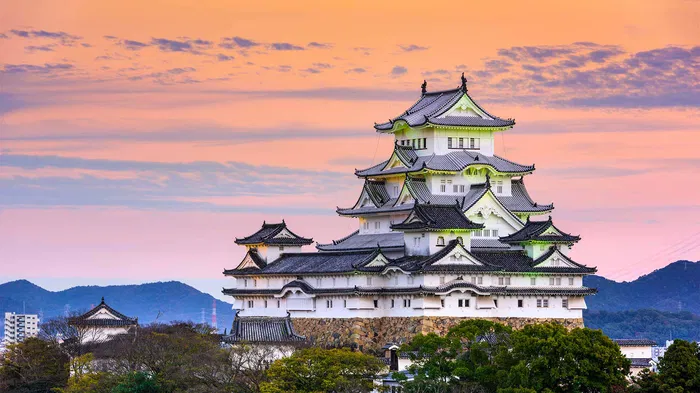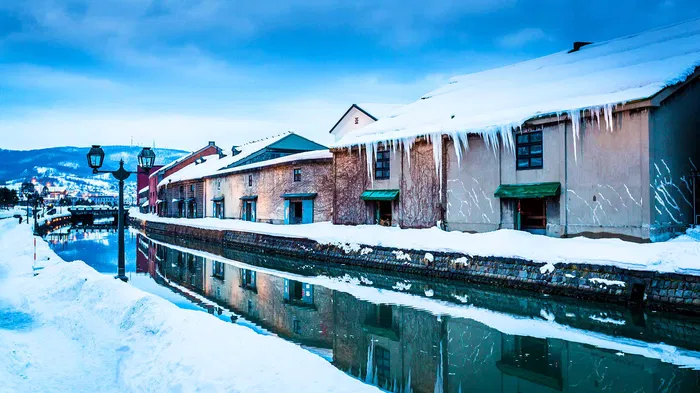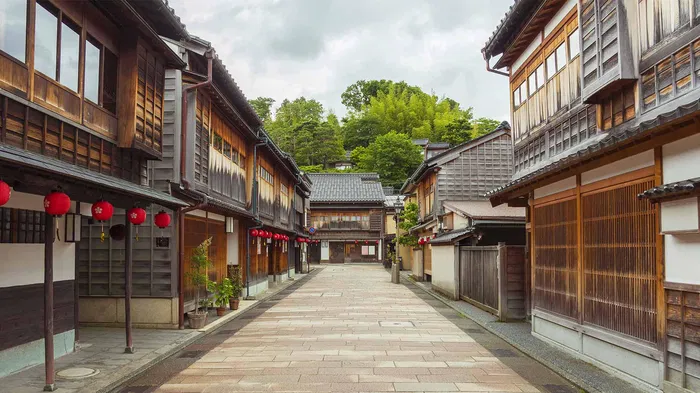
The Japanese tea ceremony is known as chado or sado, which translates to “The Way of Tea.” The purpose of this practice extends far beyond just the consumption of caffeine and is deeply tied to Japanese values.
The Japanese tea ceremony embodies the ideals of tranquility, respect, purity, and reverence; and guests who are fortunate enough to take part in the ceremony will come away from the experience feeling refreshed and at peace.
In this guide to the Japanese tea ceremony, we cover the history, tools and utensils, basic etiquette, and steps of the tea ceremony; as well as introduce a few places where you can join a tea ceremony in Japan for yourself!
Japanese Tea Ceremony History
Tea drinking has a history in China that stretches back around 4,000 to 5,000 years, but it was only introduced to Japan during the Tang dynasty (618 to 907 A.D.) when Buddhist monks brought tea seeds back from China.
During Japan’s Nara period (710-794 A.D.), tea was consumed for its medicinal properties by monks and nobles. According to legend, a monk served tea to Emperor Saga, who enjoyed it so much that he ordered tea to be cultivated in the capital, Kyoto.
Kamakura Period
It wasn’t until the Kamakura period (1185-1333 A.D.) around the 12th century that Japanese monks began grinding their tea and preparing it with a bamboo whisk that was introduced from China. This was a very early form of matcha tea preparation that led to the formation of the Japanese tea ceremony. Zen Buddhist monks initially drank tea for medicinal reasons, and to stay awake during their long meditation sessions, but during the Kamakura period, some also began to cultivate tea for religious practices.
Tea was mainly grown and consumed in the Uji district of Kyoto until the 13th century when demand for it began booming among the samurai and new noble class (Gekokujou). They would hold toucha (tea-tasting competitions) where guests who identified the variety of tea could win valuable prizes.
Muromachi Period
During the Muromachi period (1338-1573), the Shoin style of architecture came into popularity. It was heavily influenced by temple architecture, and today most chashitsu (“tea rooms”) are built in this style. Architectural elements include the tokonoma alcove where ikebana flower arrangements and calligraphy are displayed, as well as the tsuke-shoin (desk alcove), and tatami mat floors.
Prominent Figures in the History of Tea Ceremony
The three most important historical figures who shaped Japanese tea culture as we know it today are:
- Murata Juko
- Takeno Joo
- Sen no Rikyu (a.k.a. Sen Rikyu)
Murata Juko
Murata Juko laid the foundation for the Japanese tea ceremony, emphasizing the practice’s role in spiritual enlightenment. He wrote two documents, the Shuko Mondo which listed the tea ceremony’s core values (tranquility, respect, purity, and reverence); and Kokoro no Fumi, a letter where he philosophizes about the role of tea ceremony in learning more about oneself.
Murata Juko’s wabicha style of tea ceremony was more accessible and simpler than the shoin style that was practiced by the upper classes to flaunt their wealth and influence. Rather than expensive Chinese teaware which used materials like ivory or silver, Juko’s wabicha tea ceremony used bamboo tools and rustic Japanese pottery. Everyday items were juxtaposed with a few ornate Chinese pieces.
Murata Juko was responsible for creating a style of tea ceremony that was accessible even to commoners, and one of his students went on to teach Takeno Joo, another prominent figure in the history of the Japanese tea ceremony.
Takeno Joo
Takeno Joo further developed Murata Juko’s style of tea ceremony, by combining it with a style of court poetry (waka poetry). He also continued the simplification of the tearooms, like removing the wood paneling from the sliding doors. His student Sen no Rikyu, went on to evolve the practice of tea drinking into what we know of today as the Japanese tea ceremony.
Sen no Rikyu
Sen Rikyu built on Takeno Joo’s ethos of finding beauty in imperfection (wabi-sabi). He continued to evolve the architecture of the tea room, introducing the nijiriguchi “crawling in” entrance, a door into the tearoom that’s so small that guests must bow to crawl through it. This practice symbolizes a humbling and equality of the guests, no matter their social class or title. He also is responsible for designing the tiny two-tatami-mat Taian tea house, and for favoring Japanese teaware.
Today, the most prominent tea schools follow in Sen no Rikyu’s footsteps.
Japanese Tea Ceremony Utensils and Tools
In a Japanese tea ceremony, there are some basic tools and ingredients that you require to carry out a proper tea-drinking ritual.
- Matcha
- Fukusa - Silk Cloth
- Chaki or Usuki - Tea Caddy
- Chagama - Tea Pot
- Chashaku - Ladle
- Chawan - Tea Bowl
- Chasen - Tea Whisk
1. Matcha
Matcha is a type of powdered green tea. It comes in two main grades: culinary and ceremonial. Ceremonial grade matcha is the highest quality matcha, made for drinking during the Japanese tea ceremony. It is made with young tea leaves that have been grown in shade, steamed and dried, and ground into a fine powder using stone mills. It has an aroma of freshly-mowed grass, and is served as a very concentrated, thick green tea with no added sweeteners.
2. Fukusa - Silk Cloth
The fukusa is a cloth made of pure silk, used for purifying the tools used during the tea ceremony, and when the host and guests handle the chawan (tea bowl).
3. Chaki or Usuki - Tea Container
The chaki or usuki is used to store matcha tea.
4. Chagama - Tea Pot
The chagama or kama is a metal pot, often made of cast iron or copper, that’s used to heat the water.
5. Chashaku - Ladle
The chashaku is a small scoop, usually made of bamboo, that’s used to spoon the matcha powder into the chawan.
6. Chawan - Tea Bowl
The chawan is a ceramic bowl where matcha tea is whisked and served. The design of the bowl can differ depending on the season and the type of tea that’s being served.
7. Chasen - Tea Whisk
The chasen is a bamboo whisk that’s used to froth up the matcha tea. It is made by hand from a single piece of bamboo.
Basic Japanese Tea Ceremony Etiquette
What to Wear During Japanese Tea Ceremony
Traditionally, plain kimono and hakama are worn by women and men during tea ceremonies, but these days the attire is much more flexible. If you don’t have a kimono, wearing western clothing will be fine in most scenarios.
For women’s attire, try not to wear anything too revealing, flashy, or casual. Avoid skirts with a short hemline, as it may be uncomfortable while sitting for a long period of time. Men may be expected to wear a button-up shirt or a suit and tie, depending on the occasion.
Note that you will have to take off your shoes before entering the tea ceremony room, so it is recommended to wear socks.
Sitting & Gestures
When you enter the tea room, the host will guide you to your seat. Guests are expected to sit in the seiza (literally “proper sitting) position, with their legs folded under them. To do this, place your knees on the floor and rest your bottom on your heels.
Show Appreciation
The Japanese tea ceremony revolves around aesthetic appreciation. The decor, like flower arrangement, will likely be tailored to the season; the tea bowl will also be selected for the time of year.
Guests are encouraged to notice the little details around the room, from the utensils to the art hanging on the walls. It’s considered polite to show appreciation to your host by asking questions about their choices or giving genuine compliments.
Accepting & Returning the Tea Bowl
The host will present the tea bowl to each of the guests in turn. When you receive the bowl of tea, the “front” of the bowl will be facing you. You should pick up the bowl with your right hand and place it in your left palm. When the tea is served to you, bow once and raise the tea bowl to the host.
Rotate the bowl clockwise so the “front” of the bowl is not facing you anymore. Take a sip and compliment the host on the tea. After taking a few sips, wipe the rim of the bowl. Make sure the front of the bowl is facing the host when you return it, and then bow to express your gratitude.
Japanese Tea Ceremony Steps
Here’s a step-by-step breakdown of the Japanese tea ceremony.
Step 1 — Invitation
A few weeks before the tea ceremony, the host sends out formal invitations to the guests, selects the tea bowl and utensils for the ceremony, orders the wagashi sweets, and prepares the decor.
Step 2 — Preparation
On the day of the tea ceremony, the host makes sure the room is clean, a fresh seasonal flower arrangement is displayed, and the tools are properly laid out.
Meanwhile, the guests also prepare themselves spiritually, washing their hands outside the tea ceremony room in a symbolic gesture of purification.
Step 3 — Receiving the Guests
When the host of the tea ceremony invites the guests into the tea ceremony room, each guest climbs through a very small door into the tea ceremony room. This gesture of bowing to enter the room represents humility. The seating arrangement is important, with guests who are more experienced in the tea ceremony being served first. Sweets are also offered to the guests one by one as they are welcomed by the host.
Step 4 — Purification of the Tools
At the beginning of the tea ceremony, the host will begin the ritual purification of the tea ceremony utensils, cleansing them one by one using the fukusa (silk cloth).
The host also warms up the tea bowl with hot water and purifies the whisk in the water. This step is not intended to actually clean the tools, as they have actually been cleaned prior to the start of the tea ceremony, but rather acts as a symbolic gesture of purifying the guests’ souls.
Step 5 — Preparing Thick Matcha
The host will proceed to prepare the koicha (thick matcha) first, using two or three scoops of matcha tea and a little water, before whisking it with the chasen until foamy. It is served to the principal guest first, then the next guest, and so on, until there is no tea left.
Step 6 - Preparing Thin Matcha
Next, the host will prepare usucha (thin matcha) with a ratio of about one teaspoon of matcha to one cup of water. It is served similarly to the koicha, with guests each taking turns.
Step 7 — Cleaning the Tools
Following the usucha, the host cleans the tea ceremony tools. The clean chawan (tea bowl) will be handed to the principal guest to admire, who will then pass it to the other guests.
Step 8 — Departure
At the end of the tea ceremony, the host will show the guests out, bowing to each as they leave. The day after, it is customary for guests to thank their host for their hospitality.
Where to Try Japanese Tea Ceremony in Japan
Want to sit in on a traditional Japanese tea ceremony? Join a tea ceremony in Tokyo, Kyoto, or Osaka, and learn more about this rich cultural practice.
Tokyo Tea Ceremony Experiences
Japanese Tea Ceremony Hosted by a Geisha in Tokyo
Who better to host a ritual tea drinking experience than a geisha? In Japan, geisha are well-respected entertainers who are trained in traditional Japanese arts like ikebana (flower arrangement), shodo (calligraphy), singing, and dancing. Join your English-speaking geisha host for a 2-hour tea ceremony in the Fukagawa district of Tokyo and learn from a master of the art.
Tokyo Tea Ceremony and Kimono Experience
Stroll through the historic old streets of Asakusa in a kimono during a walking tour followed by a Japanese tea ceremony. You’ll learn about the origin of the tea ceremony in Japan, the etiquette involved, and the tools needed for the tea-drinking ritual.
See the full list of tea ceremonies in Tokyo >>
Kyoto Tea Ceremony Experiences
Kyoto Tea Ceremony and Maiko Performance
A rare opportunity to meet a maiko (geisha-in-training), join this Kyoto tea ceremony for an unforgettable experience. Your maiko host will demonstrate the Japanese art of ritual tea preparation, and instruct guests on how to whisk their own cup of matcha afterward. Then you’ll enjoy a cup of tea and sweets together, and be able to ask your burning questions about geisha training and Japanese arts.
Tea Ceremony in a Traditional Kyoto Machiya
Join tea master Randy Channell Soei, the highest-ranking non-Japanese tea ceremony instructor in Japan, as he teaches you about the four ideals of tea: Harmony, Respect, Purity, and Tranquility. Taking place in a beautifully renovated machiya (townhouse), you’ll feel the warm hospitality of your host as you sip tea and taste sweets made by famous Kyoto wagashi makers.
See the full list of tea ceremonies in Kyoto >>
Osaka Tea Ceremony Experience
Japanese Tea Ceremony and Sweet Treats Making Session
Not only will you be served the finest cup of matcha tea and learn about the history and etiquette of the Japanese tea ceremony, but you’ll also learn the craft of Japanese sweets — can you get a better deal than that? Following the lesson on the Japanese tea ceremony, you’ll make nerikiri wagashi by hand and take home the recipe so you can replicate these edible works of art!
Traveling outside of the Golden Route? Check out these tours:
Outdoor Tea Ceremony at Iwanuma “Snake Shrine”
Located 20 minutes from Sendai Station by train, come to rural Iwanuma for a serene outdoor tea ceremony at the legendary Snake Shrine, which is said to send prosperity your way. The immaculate shrine grounds make for a magical setting for the tea ceremony, especially in May when the wisteria bloom.
Traditional Japanese Tea Ceremony in Miyajima
Don a kimono and experience the practice of sado, ritual tea drinking, in Miyajima, Hiroshima’s stunning shrine island. Your English-speaking instructor will warmly welcome you in the spirit of omotenashi (Japanese hospitality), and teach you about the art of tea from a deeper perspective.
Hiroshima Tea Ceremony Experience
Hiroshima Hike: Mountaintop Tea Ceremony & Shrines
You may not think you could hike through nature only 10 minutes away from Hiroshima Station, but this Hiroshima mountain hike and tea ceremony experience would prove you wrong!
Take to the Mt. Futaba trail and you’ll visit the scenic Hiroshima Toshogu and Kinko Inari Shrines, soak up sweeping views of Hiroshima City, the Seto Inland Sea, and Miyajima, and wind your way through sacred forests and torii gates. Once you’re suitably relaxed and at one with nature, you’ll take part in the art of nodate, a Japanese tea ceremony performed outdoors — this time, at the top of a mountain overlooking this historic city of peace.
Mountaintop tea ceremony and breakfast in Hiroshima
You might not have thought you’d start your day in Hiroshima by hiking up a mountain and getting a front-row seat for a traditional Japanese ceremony, but if you join this mountaintop tea ceremony and breakfast in Hiroshima, you’ll do exactly that.
Not only will you enjoy the age-old tradition of making matcha, but you’ll also get to slow things down with a mountaintop breakfast and soak up the spiritual side of Hiroshima by visiting the Toshogu and Kinko Inari shrines on the way up.
Conclusion
It would take a lifetime of study to understand all the nuances of the Japanese tea ceremony, a practice that’s deeply rooted in Japanese history and intertwined with other Japanese arts. Thankfully, anyone can enjoy and appreciate the Japanese tea ceremony with a knowledgeable host to lead the way. Experience it for yourself and feel the warmth of Japanese hospitality and the serene sense of Zen that accompanies the ritual.

Browse all tea ceremony experiences in Japan and subscribe to our YouTube channel for more videos on Japanese food culture!
 Tokyo
Tokyo Osaka
Osaka Kyoto
Kyoto Hyogo
Hyogo Hokkaido
Hokkaido Nara
Nara Fukuoka
Fukuoka Hiroshima
Hiroshima Kanagawa
Kanagawa Ishikawa
Ishikawa Florence
Florence Paris
Paris Rome
Rome Porto
Porto Barcelona
Barcelona New York
New York Venice
Venice Madrid
Madrid Marrakesh
Marrakesh Istanbul
Istanbul